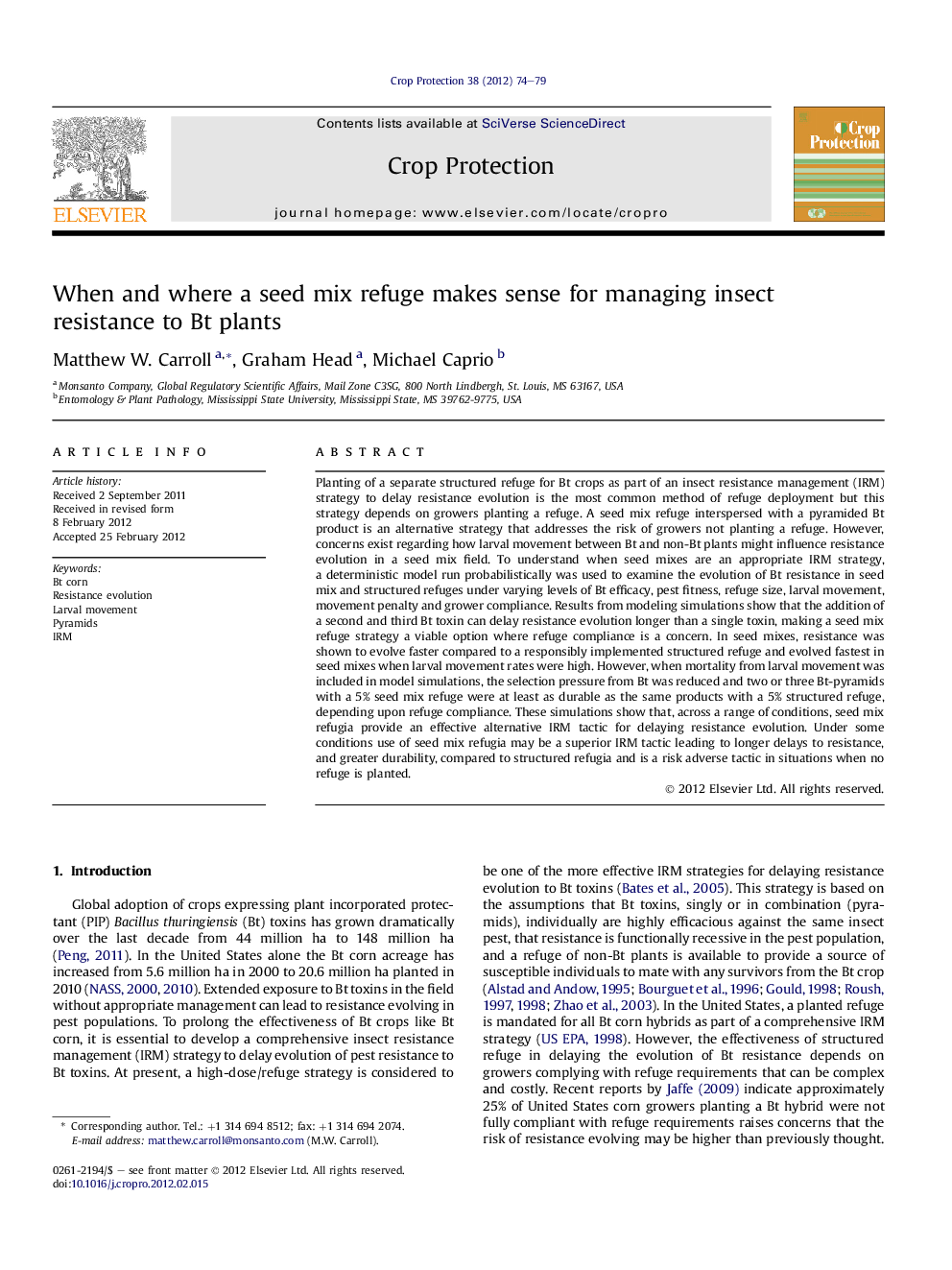| Article ID | Journal | Published Year | Pages | File Type |
|---|---|---|---|---|
| 4506429 | Crop Protection | 2012 | 6 Pages |
Planting of a separate structured refuge for Bt crops as part of an insect resistance management (IRM) strategy to delay resistance evolution is the most common method of refuge deployment but this strategy depends on growers planting a refuge. A seed mix refuge interspersed with a pyramided Bt product is an alternative strategy that addresses the risk of growers not planting a refuge. However, concerns exist regarding how larval movement between Bt and non-Bt plants might influence resistance evolution in a seed mix field. To understand when seed mixes are an appropriate IRM strategy, a deterministic model run probabilistically was used to examine the evolution of Bt resistance in seed mix and structured refuges under varying levels of Bt efficacy, pest fitness, refuge size, larval movement, movement penalty and grower compliance. Results from modeling simulations show that the addition of a second and third Bt toxin can delay resistance evolution longer than a single toxin, making a seed mix refuge strategy a viable option where refuge compliance is a concern. In seed mixes, resistance was shown to evolve faster compared to a responsibly implemented structured refuge and evolved fastest in seed mixes when larval movement rates were high. However, when mortality from larval movement was included in model simulations, the selection pressure from Bt was reduced and two or three Bt-pyramids with a 5% seed mix refuge were at least as durable as the same products with a 5% structured refuge, depending upon refuge compliance. These simulations show that, across a range of conditions, seed mix refugia provide an effective alternative IRM tactic for delaying resistance evolution. Under some conditions use of seed mix refugia may be a superior IRM tactic leading to longer delays to resistance, and greater durability, compared to structured refugia and is a risk adverse tactic in situations when no refuge is planted.
► Structured refuge based IRM for Bt crops depends on growers planting a refuge. ► The primary weakness of IRM tactics relying on structured refuge is non-compliance. ► Additional Bt toxins increase durability and partially offsets non-compliance. ► Bt resistance in seed mix refugia evolved fastest when larvae were highly mobile. ► Bt-pyramids with seed mix refuge are viable where refuge compliance is a concern.
